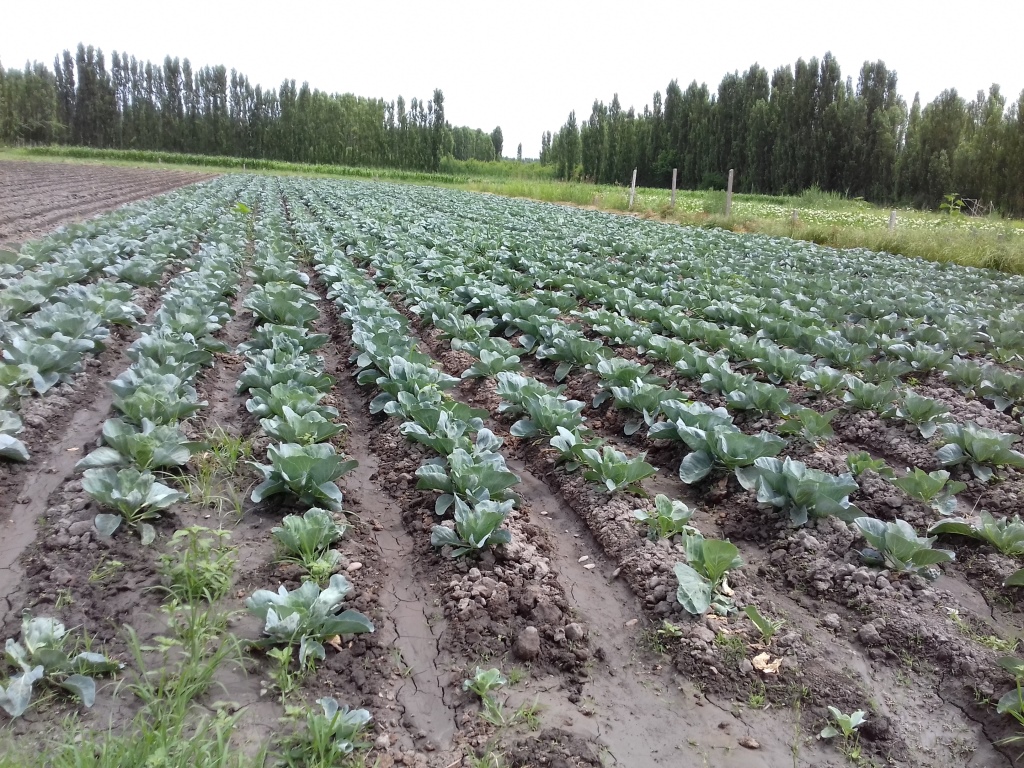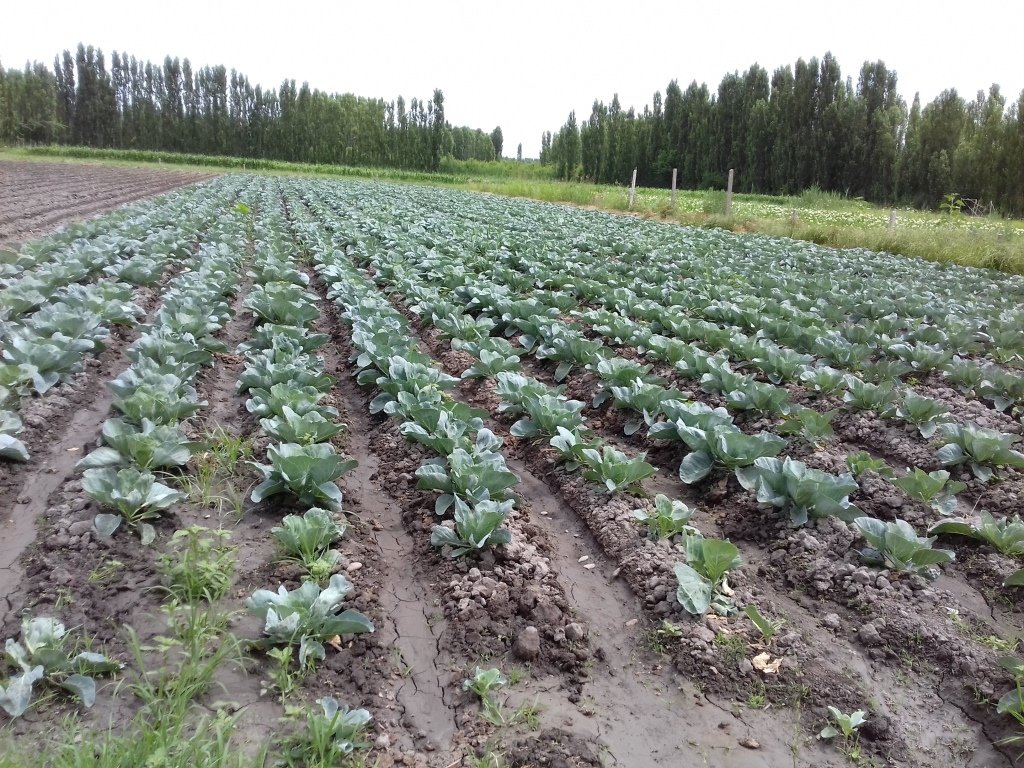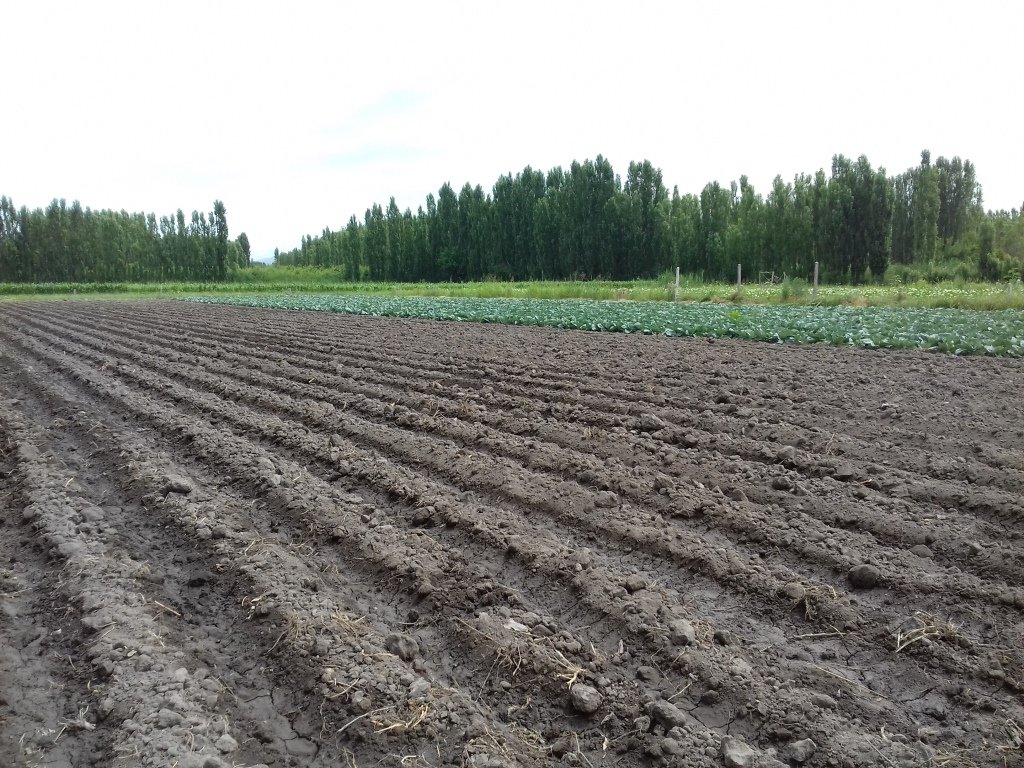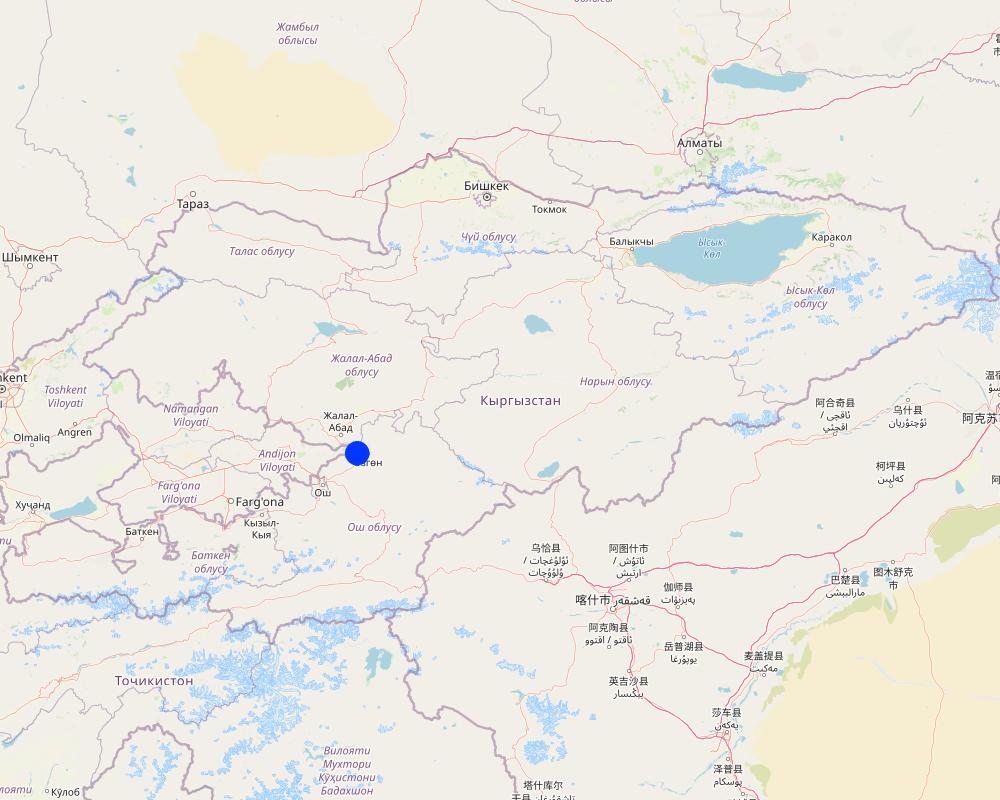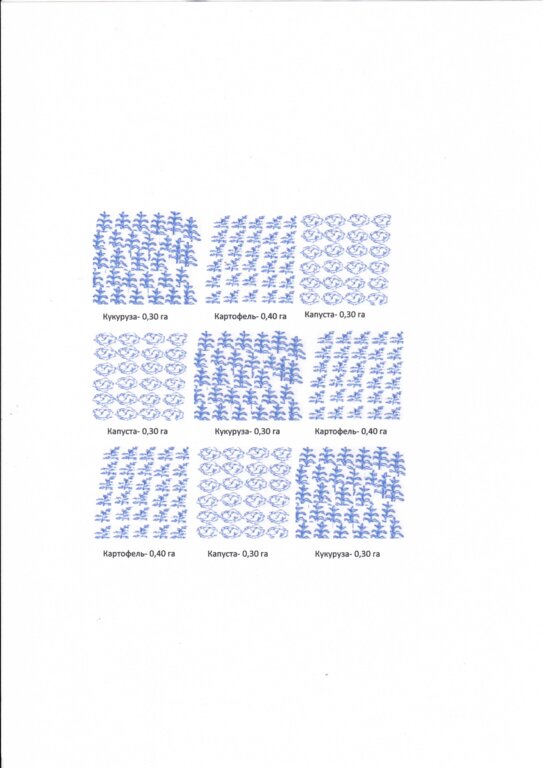Application of crop rotation in farming conditions [Kyrgyzstan]
- Creation:
- Update:
- Compiler: Dzhumabaeva Salamatkhan
- Editor: Hayot Ibrakhimov
- Reviewers: Rima Mekdaschi Studer, Olga Andreeva
Zhar-Maala village, Suzak district, Jalalabad region
technologies_5172 - Kyrgyzstan
View sections
Expand all Collapse all1. General information
1.2 Contact details of resource persons and institutions involved in the assessment and documentation of the Technology
Key resource person(s)
SLM specialist:
Name of the institution(s) which facilitated the documentation/ evaluation of the Technology (if relevant)
Public Fund CAMP Alatoo (Public Fund CAMP Alatoo) - Kyrgyzstan1.3 Conditions regarding the use of data documented through WOCAT
The compiler and key resource person(s) accept the conditions regarding the use of data documented through WOCAT:
Yes
1.4 Declaration on sustainability of the described Technology
Is the Technology described here problematic with regard to land degradation, so that it cannot be declared a sustainable land management technology?
No
Comments:
Crop rotation is one of the most important and necessary techniques in agricultural production, which leads to improved soil fertility, reduced water and wind erosion, and plant diseases and pests, and thus, promotes high agricultural crop yields
2. Description of the SLM Technology
2.1 Short description of the Technology
Definition of the Technology:
Organizing crop rotations as a way to use land efficiently, taking into account the economic interests of landowners and land users, as well as ecological and economic factors.
2.2 Detailed description of the Technology
Description:
In Kyrgyzstan, land degradation and desertification is a pressing problem that poses a threat not only to ecosystems but also has a negative impact on living standards and economic development. The agrarian reform carried out in 1991 had both positive and negative aspects. One of the positive aspects of the reform was the creation of equal starting conditions: every rural resident, whether employed or unemployed, infants or pensioners, doctors or teachers was entitled to receive the share of land and property. As a result of the reform, 510,000 families received land shares, and most farms today consist of a single family. The country is dominated by small-scale peasant farms, which cannot obtain large incomes. The main costs are associated with production, transportation, and marketing of agricultural products.
In addition, a lack of knowledge about land cultivation, growing suitable crops, and the small size of land plots have led to negative consequences such as decreased soil quality and fertility, erosion, and other problems. Centuries of accumulated agricultural experience show that continuous cultivation of almost any crop results in a significant decline in yields, erosion, contamination, and soil salinization.
Crop rotation plays an important role in addressing the issue of maintaining soil fertility. To restore and improve soil fertility, a crop rotation system has been introduced at the farm level. This technology was implemented within the FAO/GEF project “Sustainable Management of Mountain Forest and Land Resources under Climate Change Conditions.” To facilitate its application, training seminars and workshops were held for farmers, and a demonstration plot was selected.
The demonstration plot is relatively small: 1 ha, divided into three almost equal sections of 0.3–0.4 ha each. These sections are used for the alternating cultivation of different crops and the performance of necessary agricultural activities. To restore the soil and ensure good harvests, it is important to follow a planting plan.
Crop rotation plan
Crop alternation by year
Plot Year 1 Year 2 Year 3
1 (0.3 ha) Maize Cabbage Potato
2 (0.4 ha) Potato Maize Cabbage
3 (0.3 ha) Cabbage Potato Maize
Land users noted that applying crop rotation has had a positive impact on farm income by providing additional products. In addition, costs for pest and disease control, application of mineral and organic fertilizers, and weed management have decreased.
Biofertilizer Fitop-Flora-S was used to improve growth and increase yields. This product provides a comprehensive approach, enhancing soil fertility and improving crop yields.
2.3 Photos of the Technology
2.5 Country/ region/ locations where the Technology has been applied and which are covered by this assessment
Country:
Kyrgyzstan
Region/ State/ Province:
Zhar-Maala village, Suzak district, Jalalabad region
Further specification of location:
Latitude 41.099358; Longitude 73.370870
Specify the spread of the Technology:
- evenly spread over an area
If precise area is not known, indicate approximate area covered:
- < 0.1 km2 (10 ha)
Is/are the technology site(s) located in a permanently protected area?
No
Map
×2.6 Date of implementation
Indicate year of implementation:
2017
If precise year is not known, indicate approximate date:
- less than 10 years ago (recently)
2.7 Introduction of the Technology
Specify how the Technology was introduced:
- through land users' innovation
- during experiments/ research
- through projects/ external interventions
Comments (type of project, etc.):
The implementation of technologies is carried out with the support of international projects. With the support of the FAO/GEF project "Sustainable Management of Mountain Forest and Land Resources in the Context of Climate Change", theoretical and practical training of farmers is carried out, and soil and water conservation technologies are being implemented at the farm level.
3. Classification of the SLM Technology
3.1 Main purpose(s) of the Technology
- improve production
- reduce, prevent, restore land degradation
- conserve ecosystem
- create beneficial economic impact
- create beneficial social impact
3.2 Current land use type(s) where the Technology is applied
Land use mixed within the same land unit:
No
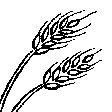
Cropland
- Annual cropping
Annual cropping - Specify crops:
- vegetables - other
Number of growing seasons per year:
- 1
Specify:
Yield increased by 15%. For example, potato yield is 18.9 t/ha.
Is intercropping practiced?
No
Is crop rotation practiced?
Yes
If yes, specify:
Crop rotation by years. The total plot area is 1 ha. The plot is divided into three almost equal areas of 0.3-0.4 ha, for the introduction of crop rotation. Cabbage, potatoes and corn were grown on the plots.
3.3 Has land use changed due to the implementation of the Technology?
Has land use changed due to the implementation of the Technology?
- No (Continue with question 3.4)
Land use mixed within the same land unit:
No

Cropland
- Annual cropping
Annual cropping - Specify crops:
- cereals - maize
- root/tuber crops - potatoes
- vegetables - other
Is intercropping practiced?
No
Is crop rotation practiced?
Yes
3.4 Water supply
Water supply for the land on which the Technology is applied:
- full irrigation
3.5 SLM group to which the Technology belongs
- rotational systems (crop rotation, fallows, shifting cultivation)
- improved ground/ vegetation cover
- integrated soil fertility management
3.6 SLM measures comprising the Technology
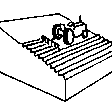
agronomic measures
- A1: Vegetation/ soil cover
- A2: Organic matter/ soil fertility
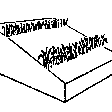
vegetative measures
- V5: Others
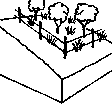
management measures
- M5: Control/ change of species composition
3.7 Main types of land degradation addressed by the Technology
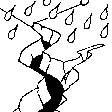
soil erosion by water
- Wt: loss of topsoil/ surface erosion

soil erosion by wind
- Et: loss of topsoil
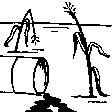
chemical soil deterioration
- Cn: fertility decline and reduced organic matter content (not caused by erosion)
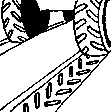
physical soil deterioration
- Pc: compaction
3.8 Prevention, reduction, or restoration of land degradation
Specify the goal of the Technology with regard to land degradation:
- reduce land degradation
- adapt to land degradation
Comments:
Crop rotation helps to replenish nutrients in the soil, protect it from water and wind erosion, prevent the spread of weeds, diseases and pests of agricultural crops, and obtain high-quality yields.
4. Technical specifications, implementation activities, inputs, and costs
4.1 Technical drawing of the Technology
Technical specifications (related to technical drawing):
The crop rotation scheme requires that the crops be replaced each year according to the rotation cycle. The selected crops are important for farmers both because they are adapted to the local climatic conditions and because they are in high demand on the market.
The total area of the plot is 1.0 ha, which has been divided into three sections for rotation. During the first year, corn (0.30 ha) was planted on the first section, potatoes (0.40 ha) on the second, and cabbage (0.30 ha) on the third. In the second year, the crops were rotated clockwise: cabbage (0.30 ha) on the first section, corn (0.40 ha) on the second, and potatoes (0.30 ha) on the third. In the third year, the crops were rotated again: potatoes (0.30 ha) on the first section, cabbage (0.40 ha) on the second, and corn (0.30 ha) on the third.
Author:
Sovetbek Mamytkanov
Date:
09/06/2017
4.2 General information regarding the calculation of inputs and costs
Specify how costs and inputs were calculated:
- per Technology area
Indicate size and area unit:
1 ha
other/ national currency (specify):
soms
If relevant, indicate exchange rate from USD to local currency (e.g. 1 USD = 79.9 Brazilian Real): 1 USD =:
69.7
Indicate average wage cost of hired labour per day:
500 soms in remote areas, 1000 soms in the city
4.3 Establishment activities
| Activity | Timing (season) | |
|---|---|---|
| 1. | Plowing | Spring |
| 2. | Leveling and compaction of the topsoil | Spring |
| 3. | Application of organic fertilizers | Spring-Summer |
| 4. | Planting/sowing | Spring |
| 5. | Irrigation | Spring-Summer |
| 6. | Hilling | Summer |
| 7. | Weed control | Spring-Summer |
4.4 Costs and inputs needed for establishment
| Specify input | Unit | Quantity | Costs per Unit | Total costs per input | % of costs borne by land users | |
|---|---|---|---|---|---|---|
| Labour | Plowing, leveling and compaction of the topsoil | ha | 1.0 | 8000.0 | 8000.0 | 100.0 |
| Labour | Planting potatoes | ha | 0.4 | 3000.0 | 1200.0 | 50.0 |
| Labour | Planting corn | ha | 0.3 | 1000.0 | 300.0 | 50.0 |
| Labour | Planting seedlings | ha | 0.3 | 2500.0 | 750.0 | 50.0 |
| Equipment | Weeding potatoes | times | 1.0 | 500.0 | 500.0 | 50.0 |
| Equipment | Weeding corn | times | 2.0 | 1000.0 | 2000.0 | 50.0 |
| Equipment | Weeding cabbage | times | 2.0 | 1000.0 | 2000.0 | 50.0 |
| Equipment | Application of mineral fertilizers | times | 3.0 | 800.0 | 2400.0 | |
| Equipment | Cultivation (potatoes, corn) | times | 2.0 | 800.0 | 1600.0 | |
| Equipment | Hilling | times | 2.0 | 800.0 | 1600.0 | 50.0 |
| Equipment | Irrigation (potatoes, corn, cabbage) | times | 5.0 | 500.0 | 2500.0 | 100.0 |
| Equipment | Application of bioorganic fertilizers | times | 3.0 | 800.0 | 2400.0 | 100.0 |
| Plant material | Spraying against diseases and pests (potatoes, cabbage) | times | 3.0 | 800.0 | 2400.0 | 100.0 |
| Plant material | Harvesting (potatoes, cabbage, corn) | times | 1.0 | 5000.0 | 5000.0 | 100.0 |
| Plant material | Transportation costs | times | 10.0 | 500.0 | 5000.0 | |
| Plant material | Potato seeds | kg | 1200.0 | 20.0 | 24000.0 | |
| Plant material | Corn seeds | kg | 8.0 | 100.0 | 800.0 | |
| Plant material | Cabbage seeds | pack | 1.0 | 1500.0 | 1500.0 | |
| Fertilizers and biocides | Mineral fertilizers (corn, potatoes, cabbage) | kg | 700.0 | 20.0 | 14000.0 | |
| Total costs for establishment of the Technology | 77950.0 | |||||
| Total costs for establishment of the Technology in USD | 1118.36 | |||||
If land user bore less than 100% of costs, indicate who covered the remaining costs:
Contribution from Land user - 55.1%, contribution from project - 44.9%
4.5 Maintenance/ recurrent activities
| Activity | Timing/ frequency | |
|---|---|---|
| 1. | Crop rotation | 3 years - each growing season |
| 2. | Irrigation | 5 times per growing season |
| 3. | Weeding | 2 times during the growing season |
| 4. | Application of mineral fertilizers | 3 times during the growing season |
| 5. | Application of organic fertilizers | 3 times during the growing season |
| 6. | Spraying against diseases and pests | 2 times |
| 7. | Harvest | in autumn |
| 8. | Transportation | in autumn |
Comments:
Crop rotation is applied on the plot over a three-year period, and it is necessary to follow the rotation of cultivated crops to prevent the spread of plant diseases and pests. After completing this short-term three-year crop rotation cycle, a new scheme can be developed with the selection of other crops.
4.6 Costs and inputs needed for maintenance/ recurrent activities (per year)
| Specify input | Unit | Quantity | Costs per Unit | Total costs per input | % of costs borne by land users | |
|---|---|---|---|---|---|---|
| Labour | Application of bioorganic fertilizers | ha | 1.0 | 800.0 | 800.0 | |
| Labour | Application of organic fertilizers | ha | 1.0 | 800.0 | 800.0 | |
| Total costs for maintenance of the Technology | 1600.0 | |||||
| Total costs for maintenance of the Technology in USD | 22.96 | |||||
If you are unable to break down the costs in the table above, give an estimation of the total costs of maintaining the Technology:
22.96
If land user bore less than 100% of costs, indicate who covered the remaining costs:
FAO/GEF Project "Sustainable Management of Mountain Forests and Land Resources under Climate Change"
4.7 Most important factors affecting the costs
Describe the most determinate factors affecting the costs:
Selection of agricultural crops that are suitable for the application of technology. Timely irrigation, spraying, weeding and fertilization will have a positive effect on crop yields and income.
5. Natural and human environment
5.1 Climate
Annual rainfall
- < 250 mm
- 251-500 mm
- 501-750 mm
- 751-1,000 mm
- 1,001-1,500 mm
- 1,501-2,000 mm
- 2,001-3,000 mm
- 3,001-4,000 mm
- > 4,000 mm
Specify average annual rainfall (if known), in mm:
500.00
Agro-climatic zone
- semi-arid
The climatic conditions of the area are characterized by average air temperatures in January of –4.4 °C in the valley and –8 °C in the mountainous part. In July, average monthly temperatures range from +26.3 °C in the valley to +23.2 °C in the mountains. Minimum air temperatures reach –30 °C in the valley and –35 °C in the mountains, while maximum temperatures reach +41 °C in the valley and +23 °C in the mountains.
The average annual precipitation ranges from 456 mm in the valley to 1,090 mm in the mountains. During the warm period, up to 300 mm of precipitation falls in the valley and up to 600 mm in the mountains. The daily maximum precipitation can reach 70 mm in river valleys and 90 mm in the mountains. The average snow cover depth reaches 50 cm in the valley and up to 200 cm in the mountains. The highest wind speeds can reach 30.5 m/s in the valleys and 42.5 m/s in the mountains.
5.2 Topography
Slopes on average:
- flat (0-2%)
- gentle (3-5%)
- moderate (6-10%)
- rolling (11-15%)
- hilly (16-30%)
- steep (31-60%)
- very steep (>60%)
Landforms:
- plateau/plains
- ridges
- mountain slopes
- hill slopes
- footslopes
- valley floors
Altitudinal zone:
- 0-100 m a.s.l.
- 101-500 m a.s.l.
- 501-1,000 m a.s.l.
- 1,001-1,500 m a.s.l.
- 1,501-2,000 m a.s.l.
- 2,001-2,500 m a.s.l.
- 2,501-3,000 m a.s.l.
- 3,001-4,000 m a.s.l.
- > 4,000 m a.s.l.
Indicate if the Technology is specifically applied in:
- not relevant
5.3 Soils
Soil depth on average:
- very shallow (0-20 cm)
- shallow (21-50 cm)
- moderately deep (51-80 cm)
- deep (81-120 cm)
- very deep (> 120 cm)
Soil texture (topsoil):
- medium (loamy, silty)
Soil texture (> 20 cm below surface):
- medium (loamy, silty)
Topsoil organic matter:
- medium (1-3%)
5.4 Water availability and quality
Ground water table:
5-50 m
Availability of surface water:
good
Water quality (untreated):
for agricultural use only (irrigation)
Water quality refers to:
both ground and surface water
Is water salinity a problem?
No
Is flooding of the area occurring?
No
5.5 Biodiversity
Species diversity:
- medium
Habitat diversity:
- medium
5.6 Characteristics of land users applying the Technology
Sedentary or nomadic:
- Sedentary
Market orientation of production system:
- mixed (subsistence/ commercial)
Off-farm income:
- 10-50% of all income
Relative level of wealth:
- average
Individuals or groups:
- individual/ household
Level of mechanization:
- mechanized/ motorized
Gender:
- men
Age of land users:
- middle-aged
5.7 Average area of land used by land users applying the Technology
- < 0.5 ha
- 0.5-1 ha
- 1-2 ha
- 2-5 ha
- 5-15 ha
- 15-50 ha
- 50-100 ha
- 100-500 ha
- 500-1,000 ha
- 1,000-10,000 ha
- > 10,000 ha
Is this considered small-, medium- or large-scale (referring to local context)?
- medium-scale
5.8 Land ownership, land use rights, and water use rights
Land ownership:
- individual, titled
Land use rights:
- individual
Water use rights:
- communal (organized)
Are land use rights based on a traditional legal system?
Yes
5.9 Access to services and infrastructure
health:
- poor
- moderate
- good
education:
- poor
- moderate
- good
technical assistance:
- poor
- moderate
- good
employment (e.g. off-farm):
- poor
- moderate
- good
markets:
- poor
- moderate
- good
energy:
- poor
- moderate
- good
roads and transport:
- poor
- moderate
- good
drinking water and sanitation:
- poor
- moderate
- good
financial services:
- poor
- moderate
- good
6. Impacts and concluding statements
6.1 On-site impacts the Technology has shown
Socio-economic impacts
Production
crop quality
Quantity before SLM:
14.5 t/ha
Quantity after SLM:
18.9 t/ha
Comments/ specify:
The use of crop rotation has a positive effect on crop yields.
The demonstration plot shows an increase in yield compared to the control plot.
Environmentally friendly products obtained.
product diversity
Quantity before SLM:
1
Quantity after SLM:
3
Comments/ specify:
The technology facilitates the cultivation of various agricultural crops on the same area, which has a positive impact on income and food security.
land management
Comments/ specify:
Land management has improved as the application of organic and mineral fertilizers improves soil quality.
Socio-cultural impacts
food security/ self-sufficiency
Comments/ specify:
Harvesting various types of agricultural crops improves nutrition of household members, which has a positive effect on their health.
SLM/ land degradation knowledge
Comments/ specify:
The use of technology has a positive effect on the economic income of the land user and improves environmental aspects. The use of technology by neighbors and relatives has a positive effect on socio-economic conditions.
Ecological impacts
Soil
soil moisture
Comments/ specify:
Balanced application of mineral and organic fertilizers leads to improved soil health.
soil cover
Comments/ specify:
Soil health improved
6.2 Off-site impacts the Technology has shown
water availability
6.3 Exposure and sensitivity of the Technology to gradual climate change and climate-related extremes/ disasters (as perceived by land users)
Gradual climate change
Gradual climate change
| Season | increase or decrease | How does the Technology cope with it? | |
|---|---|---|---|
| seasonal rainfall | summer | decrease | well |
Climate-related extremes (disasters)
Climatological disasters
| How does the Technology cope with it? | |
|---|---|
| heatwave | well |
| drought | well |
Other climate-related consequences
Other climate-related consequences
| How does the Technology cope with it? | |
|---|---|
| extended growing period | moderately |
Comments:
Climate change can have both positive and negative effects. It will influence all four dimensions of food security: food availability, access, stability, and consumption. A longer growing season and an extended frost-free period may improve agricultural conditions and help reduce post-harvest losses. However, negative impacts include changes in precipitation patterns, causing sudden fluctuations in moisture levels, as well as periodic droughts or heavy rainfall events.
6.4 Cost-benefit analysis
How do the benefits compare with the establishment costs (from land users’ perspective)?
Short-term returns:
positive
Long-term returns:
very positive
How do the benefits compare with the maintenance/ recurrent costs (from land users' perspective)?
Short-term returns:
very positive
Long-term returns:
positive
6.5 Adoption of the Technology
- 11-50%
Of all those who have adopted the Technology, how many did so spontaneously, i.e. without receiving any material incentives/ payments?
- 0-10%
Comments:
After the seminars, land users did not start applying this technology immediately. It was only in the second year, after they saw the technology’s impact on crop yields and the farmer’s income, that they began to adopt it.
6.6 Adaptation
Has the Technology been modified recently to adapt to changing conditions?
No
6.7 Strengths/ advantages/ opportunities of the Technology
| Strengths/ advantages/ opportunities in the land user’s view |
|---|
| An increase in crop yields has a positive impact on the socio-economic conditions of land users. In addition, the use of this technology benefits the environment as a whole. The technology is accessible to land users, and after receiving the necessary information (through seminars), they can apply it independently. |
|
The use of crop rotation to maintain soil fertility gives a positive effect in a relatively short period. Improvement of soil quality, prevention of erosion and soil degradation. |
| Strengths/ advantages/ opportunities in the compiler’s or other key resource person’s view |
|---|
| The use of crop rotation in vegetable growing, rational use of mineral organic fertilizers, prevention of pests and diseases, weed control and prevention of soil depletion. |
| Increase of crop yields |
| The technology is available to land users |
6.8 Weaknesses/ disadvantages/ risks of the Technology and ways of overcoming them
| Weaknesses/ disadvantages/ risks in the land user’s view | How can they be overcome? |
|---|---|
| Purchasing quality seeds | Market research |
| Lack of knowledge on the application of technology | Participation in trainings and seminars |
| Weaknesses/ disadvantages/ risks in the compiler’s or other key resource person’s view | How can they be overcome? |
|---|---|
| Lack of knowledge on growing the appropriate plants | Conducting trainings |
| Lack of knowledge on pest and disease control | Raising awareness by conducting trainings and seminars |
7. References and links
7.1 Methods/ sources of information
- field visits, field surveys
regular visits of land use planning experts to the pilot region to conduct training and consultations.
- interviews with land users
Demonstration site visits, budgeting, consultations on technology application
- interviews with SLM specialists/ experts
The expertise of SLM specialists, along with the local knowledge and traditional practices adapted by land users to local climatic conditions, was also utilized.
When were the data compiled (in the field)?
03/05/2017
7.2 References to available publications
Title, author, year, ISBN:
Вальков В.Ф. Казеев К.Ш. Колесников С.И. Почвоведение, 2004. ISBN 5-241-00405-X
Available from where? Costs?
Москва: ИКЦ «МарТ», Ростов н/Д: Издательский центр «МарТ»
Title, author, year, ISBN:
Кузнецов М.С., Глазунов Г.П. Эрозия и охрана почв, 2004. ISBN: 521104901, 5953202474
Available from where? Costs?
Издательство: МГУ, КолосС
Title, author, year, ISBN:
Учебное пособие по органическому сельскому хозяйству. ФАО, 2017. ISBN 978-92-5-409968-8
Available from where? Costs?
Рим
Title, author, year, ISBN:
Севооборот и его значение в повышении плодородия почвы и защите почв от эрозии. ФАО и ОФ "Центр обучения, консультации и инновации" ФАО и ОФ "Центр
Available from where? Costs?
Бишкек, 2018
7.4 General comments
The Kyrgyz Republic has relatively limited agricultural land resources. Land reform increased the number of private farmers and landowners, which has led to land fragmentation. This has become one of the causes of inefficient agricultural production. At present, under traditional land-use practices, farmers constantly face problems such as the gradual degradation of their land, declining soil fertility, and an increase in crop diseases and pests. Therefore, implementing crop rotation in farming is one of the ways to overcome this negative situation.
The use of this technology in a demonstration short-term crop rotation plot showed the following positive results:
- Improved soil structure, soil air and water regimes. The roots of different plants penetrate to different soil depths, absorbing nutrients, binding the soil, and creating small pores, which allow air and water to enter the soil.
- Better control of weeds, pests, and diseases. Planting the same crop season after season encouraged the development of certain weeds, insects, and diseases. Crop rotation disrupted the life cycles of these pests, diseases, and weeds, resulting in relatively high yields of good quality: potatoes (18.9 t/ha), maize grain (9.0 t/ha), and cabbage (35.0 t/ha).
- Increased soil fertility through the use of diverse crops in rotation combined with organic fertilization.
- Production of different types of agricultural products. As is well known, the classical crop rotation scheme includes the use of fallow fields. The role of fallow in crop rotation is highly important, and there are plans to introduce fallow fields in the future.
Links and modules
Expand all Collapse allLinks
No links
Modules
No modules


